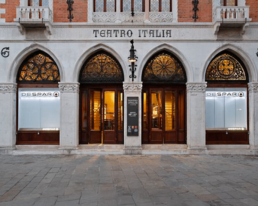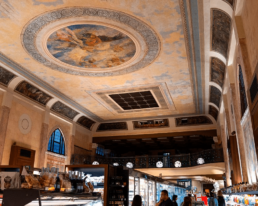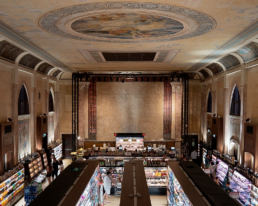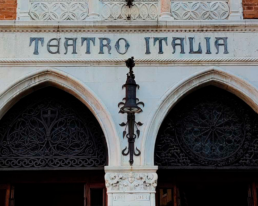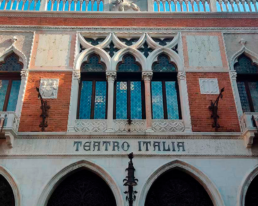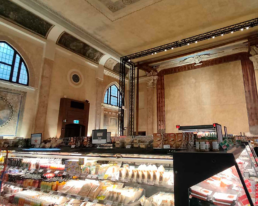From Theater to Supermarket: Venice’s Hidden Secrets
DATE
23.06.2025
Teatro Italia, designed by Giovanni Sardi (1915–16), is a beautiful example of Venetian Neo-Gothic architecture with traces of Italian Art Nouveau.
Its elegant triforas, Gothic ribbing, and wrought-iron details—such as entrance portals by Umberto Bellotto—draw inspiration directly from major Venetian landmarks like the Doge’s Palace. The rich ornamentation of its walls and ceilings includes allegorical frescoes by Alessandro Pomi and Guido Marussig, with vegetal motifs and patriotic themes that underline its heritage value.
After decades of service as a theater, cinema, and university space, the building fell into disuse around 1990 and deteriorated badly. In 2016, however, the Coin family, together with Aspiag/Despar, launched an ambitious restoration that gave it new life as a supermarket on Strada Nuova in Cannaregio. The project, rigorously overseen by the Soprintendenza, preserved the façade, the historic interiors, and all original structural elements.
The central theater plan remained intact, with no alteration to the original volumes. Low wooden shelving and integrated LED lighting let the ornamental details and frescoes remain the visual focal points in a functional setting. Technical systems—such as efficient climate control and heat-recovery ventilation—were added discreetly, respecting existing walls and maintaining the original atmosphere.
For anyone interested in architecture, art, and design, this project is a paradigm of contemporary adaptive reuse: it balances sustainability, formal conservation, and social function. Teatro Italia’s transformation demonstrates how historic urban fabric can be repurposed for modern needs without sacrificing architectural memory. Far from trivializing the space, the intervention revitalizes it economically and opens it to the community, offering a fresh perspective on the adaptive reuse of iconic buildings.
MArch Valencia. Arquitectura y Diseño
© 2025 MArch Valencia. Arquitectura y Diseño
Privacy policy | Cookies policy | Terms of use



